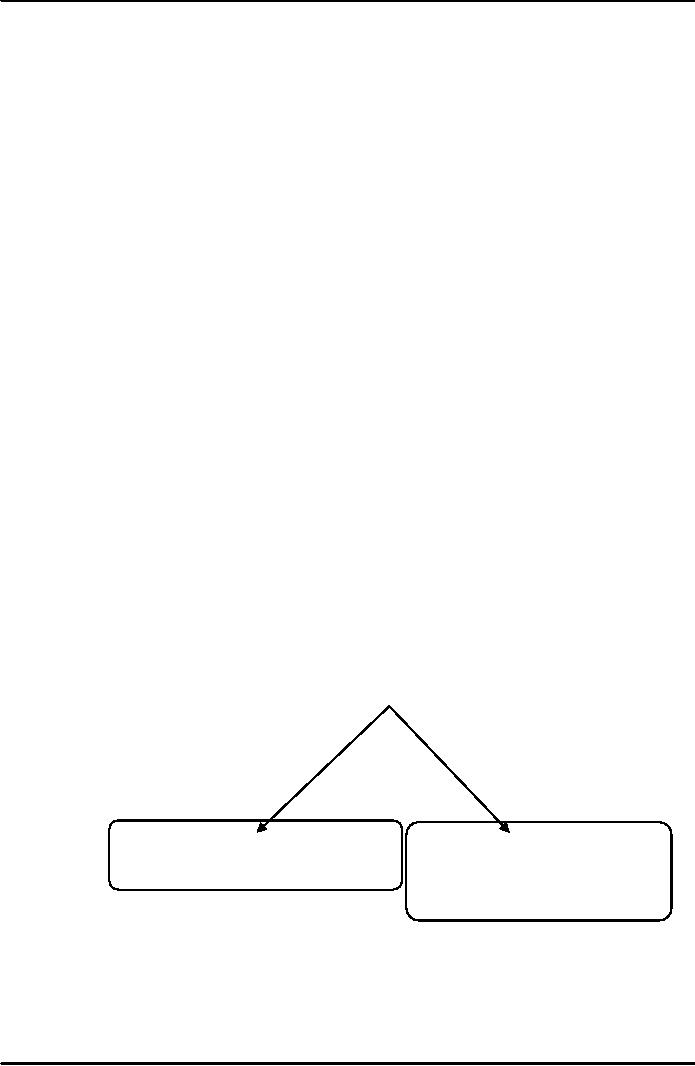 |

Introduction
to Psychology PSY101
VU
Lesson
22
COGNITIVE
APPROACH
(Also
known as the cognitive
Perspective or Model)
After
having gone through the
classical and operant conditioning
approaches ask
yourself:
�
Did
we learn, all that we know,
as a result of mere association of
stimulus and response; or
was it
learnt
just because we were reinforced
for it?????Can learning take
place as a result of some
other
processes?
�
Why
does a soldier keep resisting the strong
enemy without caring for
his life even when he
can
escape?
�
Why
would an artist donate his paintings to a
charity school and not sell
them in the market when
he
could have earned hundreds of
thousands?
All
human intellectual activities and potentials,
i.e. thinking, communicating,
problem solving, and learning
require
mental processes and knowledge. It is
more than just stimulus-response
association or reward
and
punishment.
�
In the
1970's much of psychology returned to the
study of the mind. Cognitive
psychology had a
similar
interest. It studied memory, information
processing, decision-making,
etc.Cognitive
Approach
to Learning
The
approach that focuses upon
the thought processes underlying
learning.
�
The
approach that gives importance to
cognition for understanding
and explaining learning.
�
Cognition
is defined as "the mental
processes" or the " faculty of knowing".Cognitive
learning
approach
has roots in the cognitive
perspective.
�
Cognition
means "knowledge" or "the
process of knowing".
�
Cognitive
approach emphasizes:
o
Thoughts
o
Feelings
o
Thinking
o
Values
o
Expectations
etc
�
This
theory gives same importance to
both the internal states of the
person as well as the
environmental
events.
�
Internal
events are referred a s "Mediators" or
"mediational processes"__ (that
come in between
stimulus
and response).
�
Mediators
are `conceptual' but they
are defined physiologically rather than
conceptually.
Elements
of Cognitive Model
Internal
processes = essential in
Mediators
= Work in a
understanding
Behavior
systematic
and organized way
not
in terms of trial and
Error
Emphasis
of Cognitive Approach
�
Cognitive
approach uses the following as
its focal point:
o
Emotions
o
Social
behavior
o
Behavior
modification
�
Cognitive
approach includes the elements of
psychology, linguistics, computer science
and
physiology__
thus called a `hybrid
science'.
132

Introduction
to Psychology PSY101
VU
�
The
roots of cognitive learning can be traced
in the work of Wolfgang Kohler, and
E.C.Tolman.
Wolfgang
Kohler Experiments on
apes by German scientist Kohler, led to
the discovery of the use of
insight
by animals in problem solving; "learning
by insight".
�
Most
famous of his experiments
were conducted involving
"Sultan", an ape.
�
Series
of experiments was conducted in
which it had to reach a
banana outside its cage
using a
stick.
Once it could solve this problem
several times, it was
provided with a stick that
was not long
enough
to reach the banana. However,
outside the cage was placed
a longer stick.
The
ape unsuccessfully tried
several times to reach the
banana with the smaller
stick, till it was
finally
frustrated
and retreated. Then all of a
sudden the ape got up, got
hold of the shorter stick and
used it to
reach
the longer stick; that stick
was then used to reach the
banana.
�
This
phenomenon, Kohler thought, could be
explained neither in terms of mechanical
classical or
operant
conditioning, nor trial and
error.
�
The
animal had exhibited a
sudden change in behavior or the
way it organized the
problem
situation
based upon "insight".
�
Both
Kohler and Tolman played a
vital role in laying the foundation of
cognitive approach.
Tolman's
Concept of Latent Learning
�
Tolman
talked about the `cognitive maps'; it is not
necessary to have an association
between
stimulus
and response, a person can
learn without showing any
apparent response; in other
words
learning
and performance are not the
same.
�The
type of learning in which the organism
does learn or acquire a particular
behavior but does not
readily
demonstrate
it until reinforcement is provided;
performance may not be the
same as what one has
actually
learnt.
Tolman's
Series of Early Experiments:
�
Tolman
(1886-1959) and colleagues conducted
experiments that demonstrated
that only
mechanical
association between the
stimulus and response can not explain
just every type
of
learning. In order to demonstrate this
experiment on maze learning was
conducted
using
rats that were divided
into three
groups.
�
Group-
1
For
17 days the rats were allowed wandering
around the maze once a day
without being rewarded; making
many
errors they took longer in reaching the
end.
�
Group-
2
Always
given food at reaching the end;
learned to run faster to the
end and food box;
made fewer errors.
�
Group-
3
For
the first 10 days treated
like group-1, and then given
food; running time reduced.
Errors declined;
performance
immediately matched that of
group-1.
Conclusion:
Cognitive Map
�The
rats who were not
rewarded had learnt the layout of the
maze in their initial explorations,
but
demonstrated
their ability/skill only after
reinforcement was provided; immediately after they
stared getting
food
they were almost as good as
group-1.
�They
had developed a cognitive map of the
maze that was readily
available in their mind,
that was used
only
when reinforcement was received.
Cognitive
Map
�It is a
mental representation of space,
locations, and directions; a mental
representation of learned
relationships
among stimuli.
What
function do spatial cognitive maps
perform???
In
case of humans and
animals:
�Spatial
memory is used for
identifying and recognizing the
features of their environment
e.g. cats find
their
way
back home.
133

Introduction
to Psychology PSY101
VU
�Spatial
memory is used for finding
important goal objects in
their environment.
�Spatial
memory is used for planning
route through an
environment.
Use
of Cognitive Maps by
Animals
�Birds
coming back to the same place
and point after a season
�Pigeons
carrying messages
�Cats
coming back home even after a number of
days have passed
Use
of cognitive maps by
humans
�Cognitive
maps of surroundings, primarily
based on particular landmarks are
developed by people too.
�In
their initial encounter with a
new environment, they develop cognitive
maps based upon specific
paths.
�As the
familiarity with the environment
increase, "abstract cognitive
maps" are developed i.e.,
overall
conception
of environment is developed.
�Used
by interior designers for
planning space and
arrangements in the absence of any
actual objects.
Observational
Learning
Ask
Yourself
�Will
people be behaving the same way as they do
now, if they had never seen
another human being?
�How do
toddlers learn to wear
shoes?
�Why do
small girls like to wear
lipsticks?
�How
does one reach for the
ignition in a car when
trying to drive the very first time on
his own?
�How do
many youngsters start
smoking?
�Why do people
dress up and talk like
famous actors?
Defining
observational Learning
Imitation
is an advanced animal behavior
whereby an individual observes
another's behavior and
replicates
it.
�Observational
learning refers to learning through observation of
others' behavior; or as a result of
modeling
�According
to Albert Bandura and
colleagues, a major portion of our
learning is based upon learning by
observation.
�It is the
main component of social-learning theory
in which a person makes
changes in his own
behavior
by
watching/or imitating others
i.e., a model/ a super
star/favorite personality or a cartoon
character.
�Effective
in acquiring skills, attitudes, and
beliefs simply by watching other
Observational
learning may lead to learning negative as
well as positive behaviors!!!!
�
Bandura
(1965) and others have
demonstrated that we learn
from observing models but we
don't
necessarily
copy them. In an early study,
children watched a film of an
adult hitting and kicking
a
large
punching bag type of doll.
Some of the children saw the
adult rewarded for the
aggressiveness,
others
saw the adult punished, and
still others saw no rewards
or punishment afterwards.
When
placed in a similar situation as the
adult with the doll, the
children were more
aggressive
themselves if they had seen an
adult rewarded for being
aggressive. If they had
seen
the adult punished, they were
less aggressive, even though
they could imitate the
adult
perfectly. They had learned
behavior by observing and learned to
monitor and
control
their behavior considering if it
might lead to rewards or punishment.
All parents
observe
this phenomenon in their growing
children.
Modeling
has
also been used as a form of
psychological intervention or treatment.
Children with a fear
of
dogs
(Bandura, Grusec, and
Menlove, 1967) or snakes
(Bandura, Blanchard, and
Ritter, 1969) were shown
a
134

Introduction
to Psychology PSY101
VU
model
that was not afraid and
approached and handled the animal.
The children learned to be
less afraid.
Although
observing an effective model in a film is helpful,
seeing a live model works better.
Even more
effective
is watching a live model first and
then participating by approaching and
safely handling the
feared
animal.
Steps
in Observational Learning
�The
most critical features of another
person's (model's) behavior
are paid attention to and
perceived.
�The
behavior is remembered; stored in
memory.
�The
action is reproduced.
�The
person is motivated to learn
and practice the behavior; successes
are reinforced and failures
punished.
When
is observational learning the best
approach to learning???
�In learning
those skills where shaping
is not appropriate, trial and
error impossible and
classical
conditioning
irrelevant, for example:
oFlying
airplanes as a pilot
oPerforming
surgery
Who
is a good model???
�The
one who is rewarded for
his behavior
�Those
punished for their behavior
will not usually be
copied.
�Socially
significant models (e.g. actors or
super models used in
advertisements)
�Successful
people
�Glamorous
people
�Good
communicators
Applications
of Observational Learning in Real Life
Situations
Observational
learning can be, and has
been, used successfully
for:
�Overcoming
fears in children
�Assertiveness
training
�Treating
fear of medical treatment and
surgery
�Learning
sports and athletics
�Learning
new skills, like
swimming
�Classroom
situation: good performers and high
achievers are rewarded so
that they act as models for
other
children
The
following behaviors are also
learned through observation of others
performing the same
act:
�
Learning
gender roles
�
Adopting
new fashions
�
Starting
smoking
�
Drug
abuse
�
Drinking
alcohol
�
Violence
and aggression learnt and
displayed by children
135

Introduction
to Psychology PSY101
VU
Comparison
of Different Learning
Approaches
Aspect
Behaviourist
Cognitivist
Humanist
Social
and
situational
Learning
Thorndike,
Pavlov,
Koffka,
Kohler,
Bandura,
Lave
and
Maslow,
Rogers
theorists
Watson,
Guthrie,
Lewin,
Piaget,
Wenger,
Salomon
Hull,
Tolman,
Ausubel,
Bruner,
Skinner
Gagne
View
of the
Change
in
Internal
mental
A
personal act to
Interaction
learning
process
behaviour
process
(including
fulfil
potential.
/observation
in
insight,
information
social
contexts.
processing,
Movement
from
memory,
the
periphery to the
perception
centre
of a
community
of
practice
Locus
of learning
Stimuli
in external
Internal
cognitive
Affective
and
Learning
is in
environment
structuring
cognitive
needs
relationship
between
people
and
environment.
Purpose
in
Produce
Develop
capacity
Become
self-
Full
participation in
education
behavioural
change
and
skills to learn
actualized,
communities
of
in
desired direction
better
autonomous
practice
and
utilization
of
resources
Educator's
role
Arranges
Structures
content
Facilitates
Works
to establish
environment
to
of
learning activity
development
of the communities of
elicit
desired
whole
person
practice
in which
response
conversation
and
participation
can
occur.
Manifestations
in
Behavioural
Cognitive
Andragogy
Socialization
adult
learning
objectives
development
Self-directed
Social
participation
Competency
-based
Intelligence,
learning
Associationalism
education
learning
and
Conversation
Skill
development
memory
as
and
training
function
of age
Learning
how to
learn
136
Table of Contents:
- WHAT IS PSYCHOLOGY?:Theoretical perspectives of psychology
- HISTORICAL ROOTS OF MODERN PSYCHOLOGY:HIPPOCRATES, PLATO
- SCHOOLS OF THOUGHT:Biological Approach, Psychodynamic Approach
- PERSPECTIVE/MODEL/APPROACH:Narcosis, Chemotherapy
- THE PSYCHODYNAMIC APPROACH/ MODEL:Psychic Determinism, Preconscious
- BEHAVIORAL APPROACH:Behaviorist Analysis, Basic Terminology, Basic Terminology
- THE HUMANISTIC APPROACH AND THE COGNITIVE APPROACH:Rogers’ Approach
- RESEARCH METHODS IN PSYCHOLOGY (I):Scientific Nature of Psychology
- RESEARCH METHODS IN PSYCHOLOGY (II):Experimental Research
- PHYSICAL DEVELOPMENT AND NATURE NURTURE ISSUE:Nature versus Nurture
- COGNITIVE DEVELOPMENT:Socio- Cultural Factor, The Individual and the Group
- NERVOUS SYSTEM (1):Biological Bases of Behavior, Terminal Buttons
- NERVOUS SYSTEM (2):Membranes of the Brain, Association Areas, Spinal Cord
- ENDOCRINE SYSTEM:Pineal Gland, Pituitary Gland, Dwarfism
- SENSATION:The Human Eye, Cornea, Sclera, Pupil, Iris, Lens
- HEARING (AUDITION) AND BALANCE:The Outer Ear, Auditory Canal
- PERCEPTION I:Max Wertheimer, Figure and Ground, Law of Closure
- PERCEPTION II:Depth Perception, Relative Height, Linear Perspective
- ALTERED STATES OF CONSCIOUSNESS:Electroencephalogram, Hypnosis
- LEARNING:Motor Learning, Problem Solving, Basic Terminology, Conditioning
- OPERANT CONDITIONING:Negative Rein forcer, Punishment, No reinforcement
- COGNITIVE APPROACH:Approach to Learning, Observational Learning
- MEMORY I:Functions of Memory, Encoding and Recoding, Retrieval
- MEMORY II:Long-Term Memory, Declarative Memory, Procedural Memory
- MEMORY III:Memory Disorders/Dysfunctions, Amnesia, Dementia
- SECONDARY/ LEARNT/ PSYCHOLOGICAL MOTIVES:Curiosity, Need for affiliation
- EMOTIONS I:Defining Emotions, Behavioral component, Cognitive component
- EMOTIONS II:Respiratory Changes, Pupillometrics, Glandular Responses
- COGNITION AND THINKING:Cognitive Psychology, Mental Images, Concepts
- THINKING, REASONING, PROBLEM- SOLVING AND CREATIVITY:Mental shortcuts
- PERSONALITY I:Definition of Personality, Theories of Personality
- PERSONALITY II:Surface traits, Source Traits, For learning theorists, Albert Bandura
- PERSONALITY III:Assessment of Personality, Interview, Behavioral Assessment
- INTELLIGENCE:The History of Measurement of Intelligence, Later Revisions
- PSYCHOPATHOLOGY:Plato, Aristotle, Asclepiades, In The Middle Ages
- ABNORMAL BEHAVIOR I:Medical Perspective, Psychodynamic Perspective
- ABNORMAL BEHAVIOR II:Hypochondriasis, Conversion Disorders, Causes include
- PSYCHOTHERAPY I:Psychotherapeutic Orientations, Clinical Psychologists
- PSYCHOTHERAPY II:Behavior Modification, Shaping, Humanistic Therapies
- POPULAR AREAS OF PSYCHOLOGY:ABC MODEL, Factors affecting attitude change
- HEALTH PSYCHOLOGY:Understanding Health, Observational Learning
- INDUSTRIAL/ORGANIZATIONAL PSYCHOLOGY:‘Hard’ Criteria and ‘Soft’ Criteria
- CONSUMER PSYCHOLOGY:Focus of Interest, Consumer Psychologist
- SPORT PSYCHOLOGY:Some Research Findings, Arousal level
- FORENSIC PSYCHOLOGY:Origin and History of Forensic Psychology